
|
|

|
YOU ARE HERE: Real or Fake>>Fake ancient glass>>Fake iridescence
From mesolithics 17Aug 05
I bought a 10" fake core formed glass vessel from a guy in California on ioffer.com, what nailed me was the irridescent green patina randomly distributed on the piece. When the piece arrived, I was suspect, but kept on inspecting this irridescent beautiful patina, having a slight chemical background, I swabbed some acetone on the patina and it came right off!!
Actually, the patina is a New Krylon paint type for irridescent effects..I kept
Better you should know about it now than find out the hard way!
Krylon® Make It IridescentTM
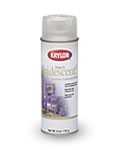
Color & Product Offering
Layer this ultra-translucent finish over any color for a new look in one easy step- Beautiful, sheer iridescent color
- Easy one-step application
- Transforms any plain color into an iridescent finish
Recommended Surfaces:
Glass
Metal
Paper
Papier Mache
Plastic
Wicker
Wood
I have seen genuine pieces with bits of iridescence stuck on with glue!
But this piece of course failed the first step...being modern, how could have acquired such weathering?
June 06
Stephen bought this.
After all the close up pic on eBay seemed to show the wear of age if not actual iridescence. Look at the second pic.
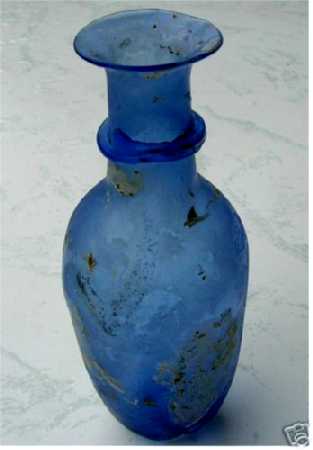
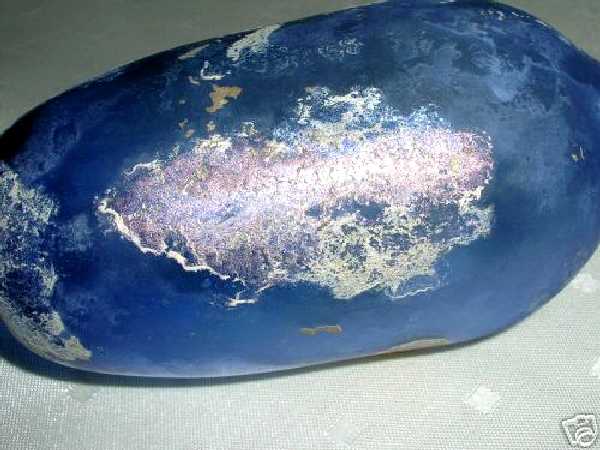
From the pics I said it was fake.
Nice cobsalt blue but wrong shape and looks reasonably new.
But this wear on the surface?
Almost iridescent.
How do fakers do that?
Well he brought it to me to have a look.
And it's clear that this seller does a certain trick with the lighting because this is what it actually looks like:
As rather florid confirmation of the fakery here he brought along this smaller bottle as well, from the same factory I would say!
1st March 08
Sellers of fake glass sometimes draw attention to iridescense in or on the glass as way of convincing the buyer of the genuine antiquity of the piece.
However, be aware that surface iridescense which can easily flake off is actualy sometimes very carefully glued onto new pieces! Beware of large flakes with fracture lines all round which are nevertheless firmly adherent. (Unless the surface has been sprayed with an acryllic lacquer!) In cases where flakes may have been applied and the surface sprayed look with a x20 loupe for continuity between adjoining flakes.
Some fakers use a special iridescent paint. This comes off with acetone but so do genuine flakes of iridescence! The difference is that the paint will not look like surface flaking as such under high powered loop and the quality of the glass surface beneath a removed flake is different from the quality beneath a layer of iridescent paint. Unless the faker has already altered the surface with certain chemicals which can create some surface pocking!
Here are a few examples of not well faked iridescense.
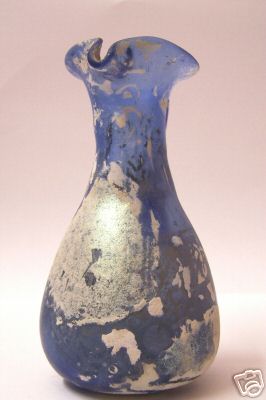
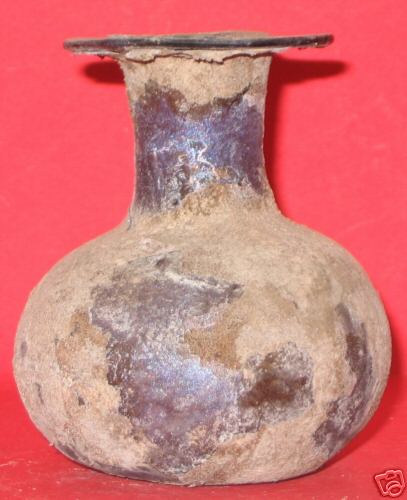
Here is an example of little flakes of genuine iridescense stuck on a fake bottle with glue.
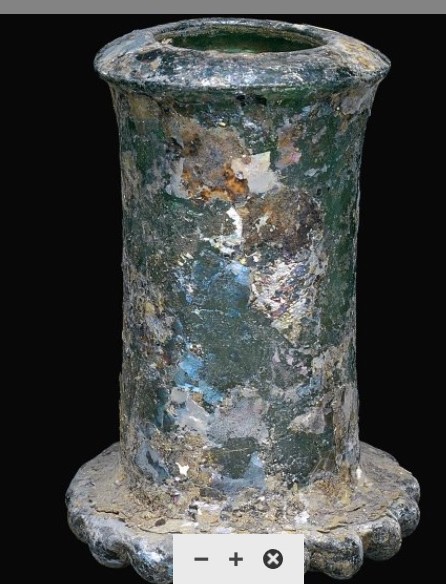

More about FAKE ![]() iridescense in Roman glass
iridescense in Roman glass


Home | About This Site | Privacy Statement | Gallery | Testimonials | Guarantees
About Collectors' Resources pages | What's New
Search | Site Map | Contact Us